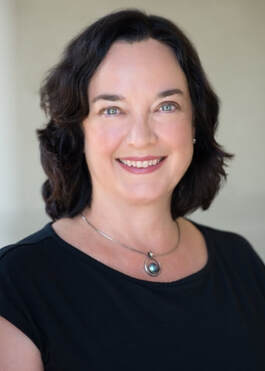 Sarah Hanawald Sarah Hanawald Welcome back... to distance learning (for many of us). Let’s be honest--this isn’t where we hoped we’d be when we started the school year. Whether it’s in response to travel, rising case loads, or local restrictions, many schools have returned to online instruction at the moment when teachers are feeling more exhausted and overwhelmed as ever. Schools may need to be in distance mode, but it doesn’t have to be at the expense of their teachers. There are concrete steps you can take to make the next phase of this crisis more sustainable. First, it’s essential to recognize that schools aren’t able to operate online the same way they do on campus. I like to use the metaphor of a race here: your 100m sprinter and your 100m hurdler are covering the exact same distance, but they aren’t going to do it in the same amount of time. We trained as sprinters, and we've had to switch to the hurdles. The past nine months have thrown very real obstacles into the ways schools usually operate. Now, educators need to measure ourselves in the race we're running, not the one we expected to run. The race we’re in isn’t a 100m dash--it’s a 10k. Schools are in it for the long haul, and that means it’s time for academic leaders to develop significant plans to protect the energy and morale of the teachers who are responsible for delivering students and programs to the still unsighted and unmarked “end” of pandemic schooling. How? Not by gifting teachers coffee and chocolate or finding a game to open full-faculty Zoom meetings but by setting up structures that serve teachers professionally. Intentional leaders provide and fiercely protect adequate professional working time so that teachers can succeed in all aspects of their role. Protecting time for teachers to engage with their colleagues and their craft can be transformational. Math teacher José Vilson, the co-founder and executive director of EduColor, as well as the author of This Is Not A Test, has been speaking and writing for years about the negative impact of inadequate professional time. He cites OECD research revealing that US teachers get the least amount of compensated professional time when compared to their peers internationally. Noting that “teachers generally work better given better systems in which to work,” Vilson sees a need for leaders to ensure that teachers spend school-day (e.g., compensated) time completing essential tasks and improving their professional practice. There are schools that already build extended professional time (beyond planning periods) for teachers into their schedules. Schools have established scheduled “drop days” in which all the teachers in one department have full professional days built into the rotating schedule on a regular basis. Other schools have instituted longer, multi-day departmental or grade-level retreats that take place during specific times of the year. In each of these formats, the emphasis is on providing protected professional time for teachers that is focused solely on designing and building the student learning experience, free of student-facing responsibilities. This time should not be confused with regular office hours and planning/grading time that occur in the daily schedule. What do teachers do during these times? They may spend time collaborating with grade-level and department peers working on vertical and horizontal curriculum alignment. Other time may be spent building out future units in the learning management system or analyzing assessment results to re-align coming instruction. This professional time doesn’t take the place of daily office hours, planning time, or even actual breaks. Instead, these intentional times recognize the need for teachers to engage in significant intellectual tasks that cannot be completed in fits and starts of 30 minutes or by working all weekend and into the night. What do students do during these times? Older students may have unstructured time to use for work in other disciplines; e.g., taking advantage of their art teacher’s office hours during what is normally the student’s math period. They may work collaboratively on extended projects when they would have had that class meeting. For younger students, while substitutes may be the answer, this also might be the time for extended projects with specialists or SEL initiatives. Building in significant non-student facing professional time for teachers will likely mean taking a hard look at schedules and resources. However, the result can be an immediate difference in the ability of teachers to carry themselves and their students safely through the coming months and beyond.
2 Comments
9/25/2022 01:32:17 am
Thank you for posting this article. If you want to earn money online feel free to visit this site https://www.7xm.com/
Reply
10/18/2022 03:47:38 am
Thank you for posting this article.
Reply
Leave a Reply. |
Don't miss our weekly blog posts by joining our newsletter mailing list below:AuthorsBrad Rathgeber (he/him/his) Archives
July 2024
Categories |

 RSS Feed
RSS Feed